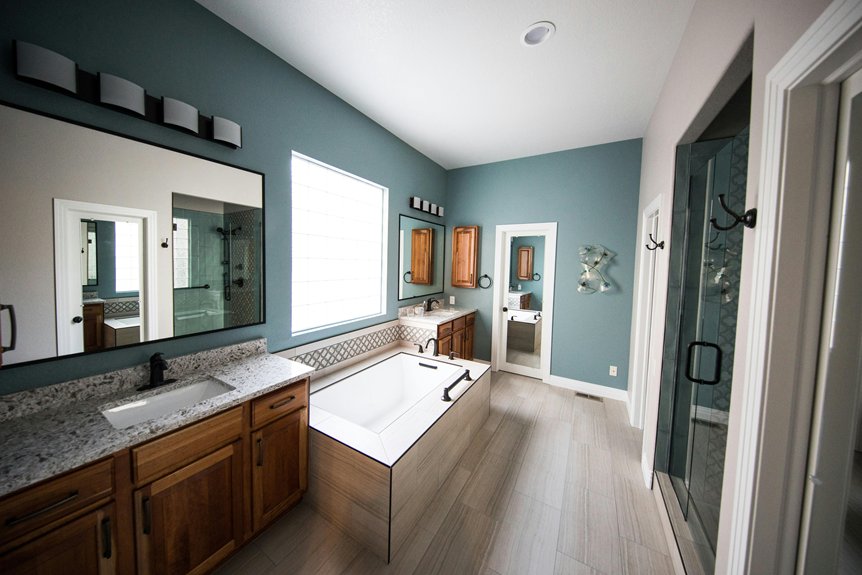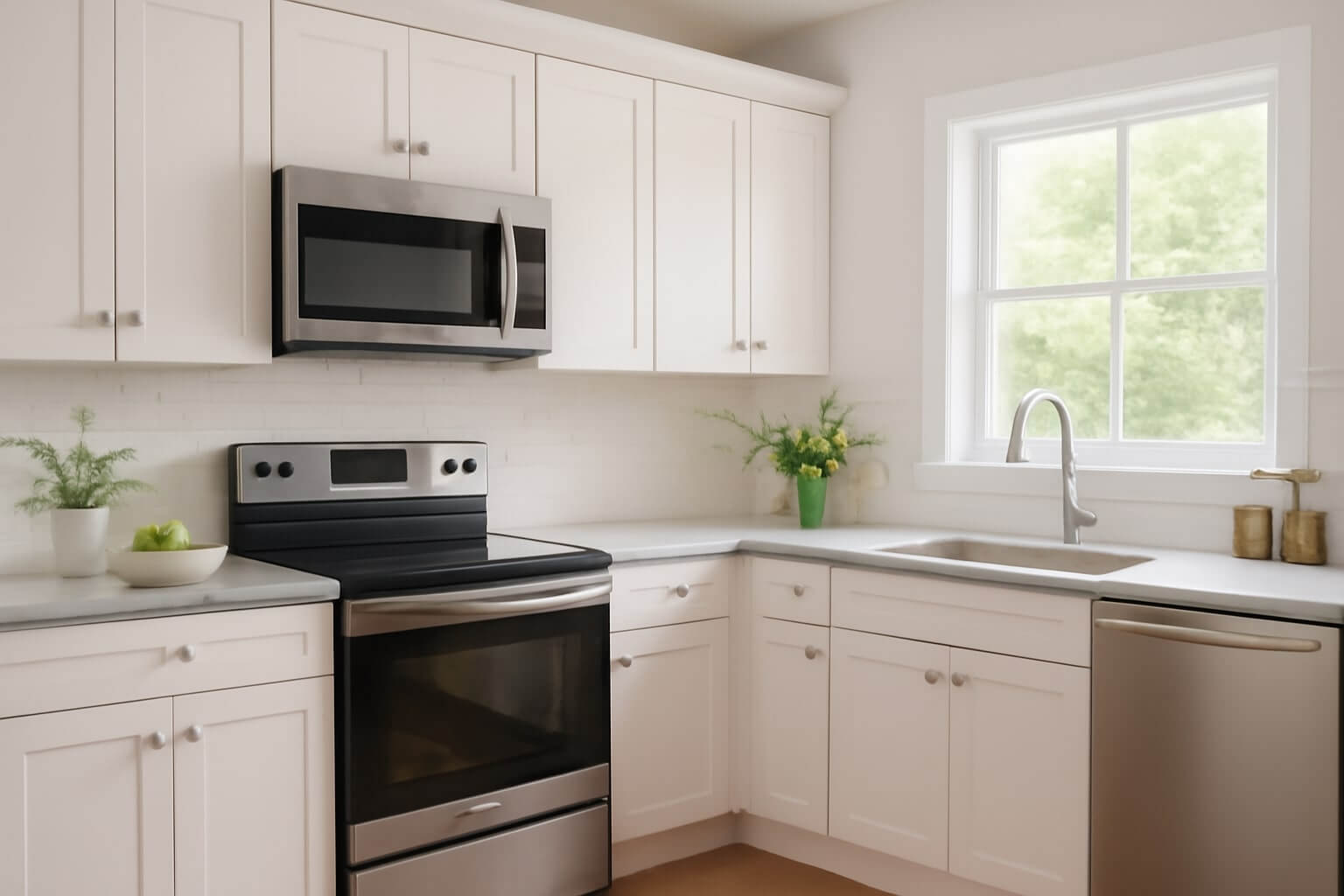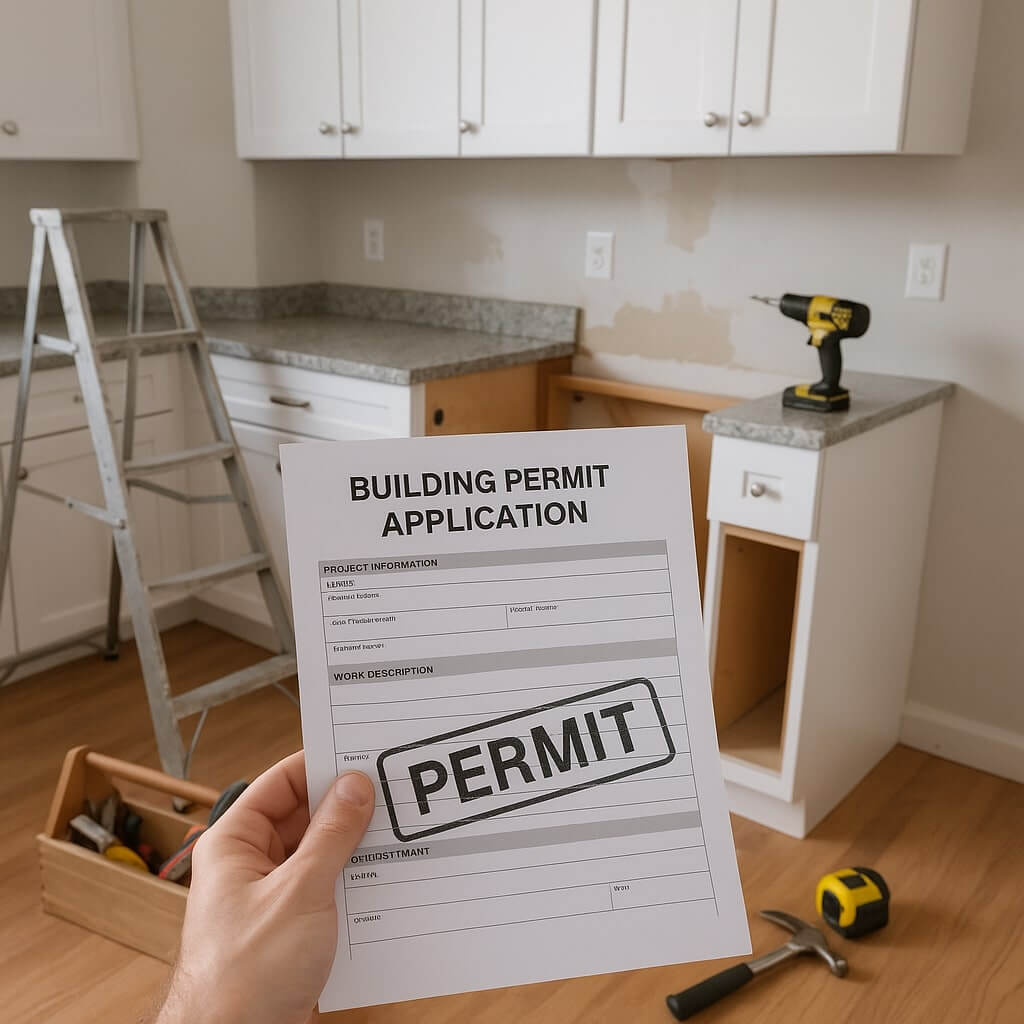When you’re remodeling your kitchen, setting up a temporary sink can be essential for maintaining your workflow. You’ll want to choose an accessible location that makes food prep easier. Selecting the right sink option is important, too, as it needs to fit your space and needs. Let’s explore how to guarantee proper plumbing connections and keep everything organized, so your temporary setup runs smoothly during the remodel.
Key Takeaways
- Choose a location near food prep areas and appliances for optimal accessibility during use.
- Select a functional sink option, such as portable or freestanding models, based on your space and needs.
- Ensure proper plumbing connections using durable materials like PVC or PEX for easy installation.
- Organize your temporary kitchen with portable storage solutions to enhance accessibility and efficiency.
- Maintain cleanliness by keeping essential cleaning supplies handy and establishing a routine for washing hands and surfaces.
Choose the Right Location for Your Temporary Sink
Choosing the right location for your temporary sink can make all the difference in your kitchen setup.
Start by considering sink placement—ideally, it should be near your food prep areas and appliances. This minimizes the hassle of moving around while cooking.
Next, think about accessibility factors; you’ll want it to be easy for everyone to reach, especially if you’re hosting.
Confirm there’s enough space around the sink for drying dishes and storage.
Also, keep plumbing access in mind to avoid complications.
Select a Functional Sink Option
When selecting a functional sink option for your temporary kitchen, it’s essential to contemplate both your immediate needs and the space available.
Consider your immediate needs and available space when choosing a sink for your temporary kitchen.
Portable sink options, like countertop or freestanding models, can provide convenience without taking up much room. Think about your cooking habits; a larger basin may be beneficial if you wash big pots.
Additionally, consider sink material choices, such as stainless steel for durability or plastic for lightweight portability. Each option has its advantages, so prioritize what works best for your renovation timeline and daily tasks.
A well-chosen sink can make your temporary kitchen more efficient and enjoyable.
Ensure Proper Plumbing Connections
After selecting the right sink for your temporary kitchen, the next step is to secure proper plumbing connections. Use high-quality plumbing materials like PVC or PEX for durability. Familiarize yourself with common connection techniques, such as compression fittings and solvent welding, to guarantee a leak-free setup.
Here’s a quick reference table for plumbing materials and techniques:
| Material | Connection Technique | Notes |
|---|---|---|
| PVC | Solvent Welding | Strong, permanent bond |
| PEX | Crimp Fittings | Flexible and easy to install |
| Copper | Soldering | Long-lasting, requires skill |
| Stainless Steel | Compression Fittings | Corrosion-resistant |
| ABS | Solvent Welding | Lightweight, easy to work with |
With the right approach, you’ll have a reliable temporary sink setup.
Organize Your Temporary Kitchen Setup
To create an efficient temporary kitchen setup, you’ll want to prioritize organization from the start.
First, invest in portable storage solutions like bins or carts to keep your essentials easily accessible. Group similar items together—utensils, dishes, and food supplies—to streamline meal prep.
Use a makeshift countertop, such as a sturdy table or a large cutting board, to create a designated space for cooking and food assembly. Keep frequently used items at the front, so you’re not rummaging through boxes.
An organized space not only improves functionality but also makes cooking during your remodel much more enjoyable.
Maintain Cleanliness and Hygiene
Keeping your temporary kitchen clean and hygienic is essential for safe cooking. Start by gathering essential cleaning supplies, like disinfectant wipes, sponges, and antibacterial spray.
After each meal prep, wipe down surfaces and your temporary sink to prevent bacteria buildup. Remember to wash your hands frequently; maintaining proper hand hygiene is vital during this process.
Wipe down surfaces and your temporary sink after meal prep, and remember to wash your hands frequently for optimal hygiene.
Designate a spot for dirty dishes and clean them promptly to avoid attracting pests. By establishing a routine for cleanliness, you’ll create a healthier cooking environment, even amidst the chaos of a remodel.
Stay organized, and you’ll make the most of your temporary kitchen experience!
Conclusion
By following these five essential tips, you can set up an efficient temporary kitchen sink that meets your needs during your remodel. Choosing the right location, selecting a suitable sink, ensuring proper plumbing, organizing your setup, and maintaining cleanliness will make your cooking experience smoother and more enjoyable. With a bit of planning and effort, you’ll keep your kitchen functional and tidy, making the remodeling process a breeze! Happy cooking!




